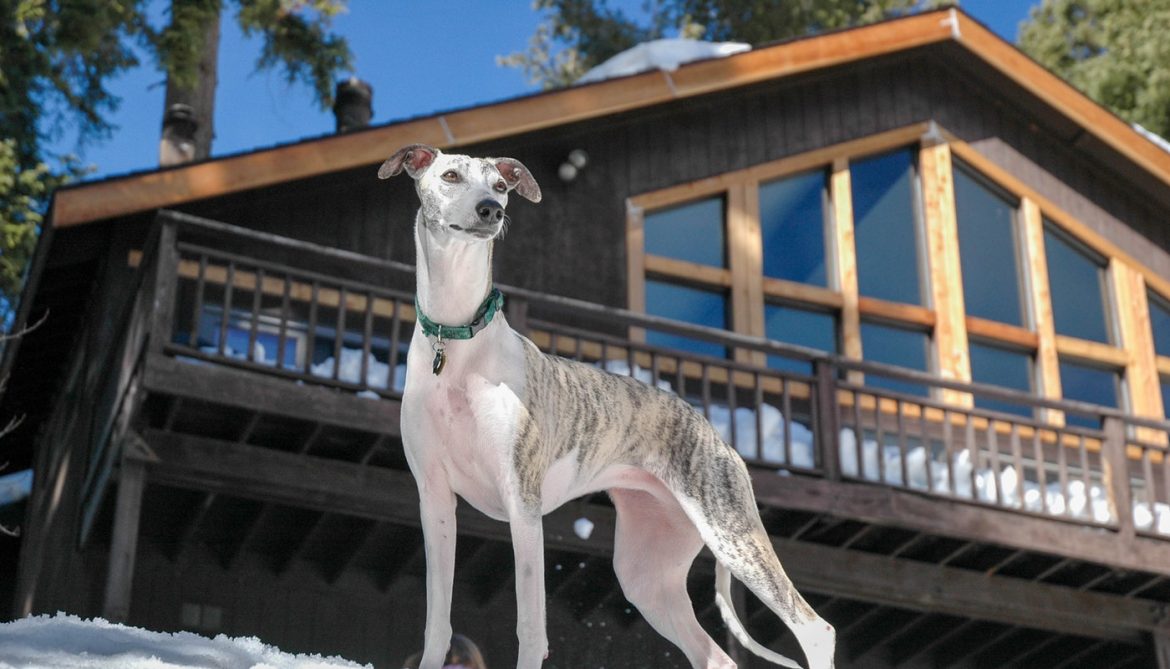A breed where form follows function, Greyhounds are built for speed, stamina, and flexibility. Often called Ferraris of the dog world, they can reach close to seventy-two kilometres an hour on the race track. A Greyhound’s light, aerodynamic skull and shock-absorbing pads help it achieve constant speed and endurance. But under all that strength and agility is a lovable lap dog.
History
The breed is so ancient that it finds itself carved on Egyptian tombstones that are from 129 B.C. They’re called ‘Greyhounds’ because their original coat colour was grey, and they are sighthounds. The Romans used Greyhounds for coursing – a sport where they are made to chase hares. During the colonial era, they were shipped to America from Spain, where the breed flourished among farmers who used them to chase crop-destroying jackrabbits. Once the breed’s versatility became popular, people all over the world began adopting Greyhounds.
About the Breed
Nutrition
Greyhounds typically need higher calories and protein than do other dogs because of their high metabolism. However, calories without sufficient exercise can do more harm than good. Besides this, Greyhound benefits from a wholesome, nutritious diet that is in accordance with his age and activity level. Remember to encourage your Grey to drink water since they are notoriously known to suffer from dehydration from not drinking enough water.
Grooming
Greyhounds have a short, smooth coat that requires weekly brushing and de-shedding. Bathing is necessary only once in fourteen days unless visibly dirty or smelly. Greyhounds have fast-growing nails which need to be trimmed regularly to avoid discomfort while walking/running. Ears should be cleaned once a week for any buildup of wax that can cause an infection. Most Greyhounds suffer from gingivitis; hence, it is best to brush their teeth regularly to avoid the buildup of tartar.
Exercise
This is a dog that can go from being a lap dog to a race dog. Greyhounds require regular exercise to keep them happy and calm throughout the day – a minimum of two hours of vigorous aerobic exercise in the form of running or jogging. Playing fetch is an all-time favourite of Greyhound, especially when played in the backyard, beach, or park.
Training
Greyhounds were bred to hunt by sight and not scent. They did not require guidance from a hunter, as did scent hounds. Hence, they are very independent-minded and stubborn at times. However, with good socialisation and short, consistent training lessons, you can have an obedient Greyhound. Remember to keep training short since Greyhounds bore easily. Besides, Greyhounds enjoy working with their parents instead of for them, so make training fun in the form of games or puzzles.
Health
The breed is generally healthy, but like many large breeds, they are prone to bloat and gastric torsion (where the stomach enlarges and twists). They also suffer from hypothyroidism, arthritis, cataracts, deafness and Greyhound Neuropathy. With routine checkups, nutritious food, appropriate supplementation, and sufficient exercise, it is possible to prevent or at least delay the occurrence of such health complications.
Temperament
There ain’t a sweeter dog! Greyhounds are calm, gentle, loving, loyal, and charismatic dogs who’d love being couch potatoes and binge-watching a show with you! They are great with kids and adults of all ages, making them the perfect family pet!
Greyhound – perfect for me?
They’re gentle, calm, loving, and loyal.
They do well in apartments if given sufficient exercise.
Greyhounds like to be clean
They are a hardy breed
Greyhounds can live in hot weather
Is this the best breed for me?
Greyhounds are prone to shedding
They are big dogs and take up a lot of space
They need good obedience training to keep them from running away
Greyhounds need a special diet
As majestic as they are, Greyhounds have a heart of gold. A breed so pure in loyalty, trust, and affection that it might just outdo the other breeds.
,

